Between the Intertropical Convergence Zone (ITCZ): Causes and Impact
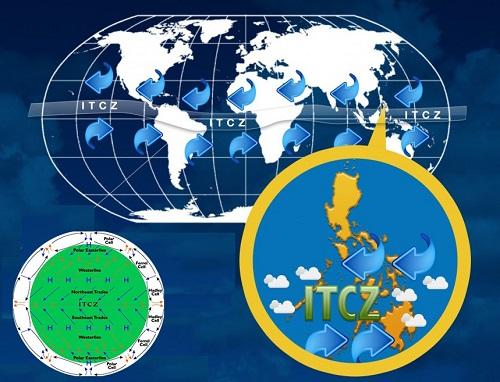
The Intertropical Convergence Zone (ITCZ) plays a pivotal role within the worldwide atmospheric circulation system recognized as the Intertropical Front or Equatorial Convergence Zone. Situated in proximity to the Earth’s equator, it represents a region characterized by fundamentally low air pressure. Additionally, the ITCZ functions as a convergence zone where trade winds converge. In this discussion, we aim to provide an overview of the concept, underlying causes, and the impact of the ITCZ (Intertropical Convergence Zone) for general understanding.
ITCZ
What is the ITCZ (Intertropical Convergence Zone)?
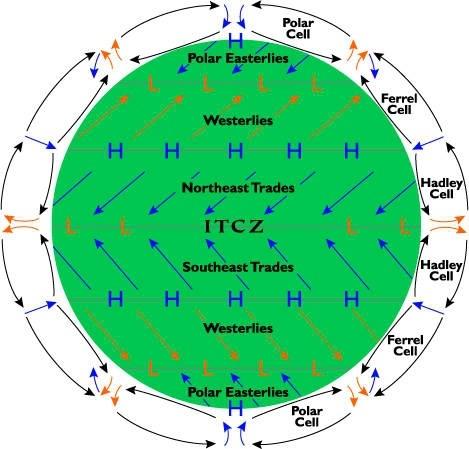
Idea of ITCZ
The Intertropical Convergence Zone (ITCZ) represents a distinctive region located between the northern and southern hemispheres, where air currents originating from the mid-latitudes flow towards the equator, while winds coming from the tropical regions move poleward. This dynamic zone experiences periodic shifts in its position, driven by the movement of the Sun across the sky. For instance, when the ITCZ migrates north of the Equator, the prevailing southeast trade winds transform into southwesterly winds upon crossing the equatorial line. The ITCZ, in its migratory journey, oscillates between approximately 40° to 45° of latitude, both north and south of the Equator, influenced by the specific geographical features and the presence of vast bodies of water.
What causes the ITCZ (Intertropical Convergence Zone)?
The inception of the ITCZ, or Intertropical Convergence Zone, can be attributed to the intersection of the northeast and southeast trade winds within the geographical vicinity encircling the Earth’s equatorial region. A comprehensive comprehension of this phenomenon necessitates an exploration of wind patterns and air masses in the area.
- Trade Winds: These are the prevailing easterly winds that encircle the Earth in proximity to the equator.
- Air Masses: An air mass is characterized by its temperature and water vapor content. In tropical regions, the air mass is typically hot to scorching, with notably high relative humidity, contributing to the emergence of dynamic weather conditions.
The ITCZ materializes as a distinct belt of clouds marked by recurrent showers, interspersed with occasional thunderstorms, as it encircles the globe in close proximity to the Equator. This meteorological phenomenon is a direct outcome of the convergence of the trade winds, converging air masses, and their subsequent interplay.
What is the ITCZ, why does it happen, and how is it significant for human life?
What are the effects of the ITCZ on climate?
The Intertropical Convergence Zone (ITCZ) represents a climatic phenomenon that demands exploration for a comprehensive understanding of its nature, underlying causes, and its pivotal importance in the context of human existence.
Significance of the ITCZ: The ITCZ plays a crucial role in shaping the Earth’s climate by marking a dynamic convergence zone where trade winds from both hemispheres meet. This meeting has profound implications for human life, as it significantly influences weather patterns, precipitation, and the overall climate of regions in proximity to the Equator.
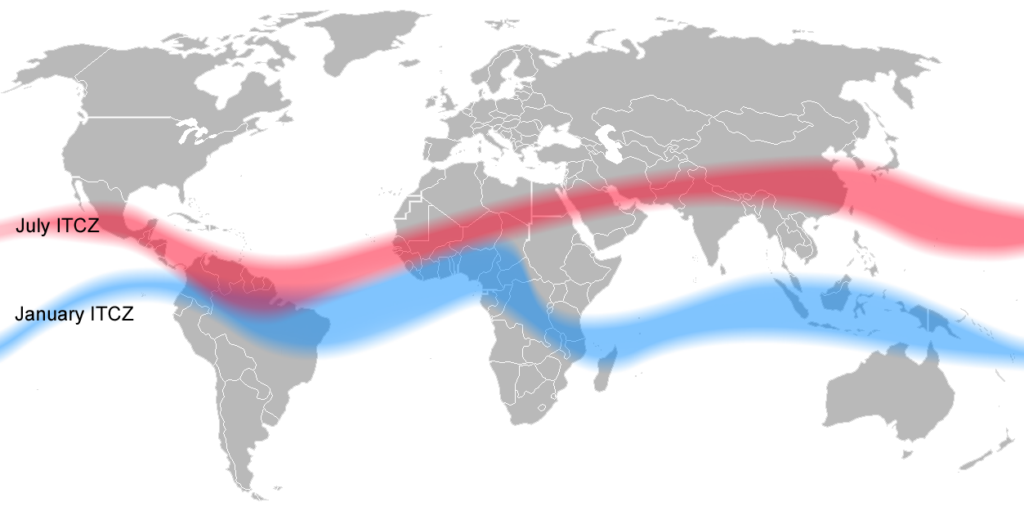
Effects of the ITCZ on Climate:
The ITCZ has far-reaching effects on climate, manifesting in the following ways:
Precipitation Patterns: The ITCZ is instrumental in driving precipitation patterns within a central region near the Equator. This climatic feature is responsible for the distinctive wet and dry periods observed in tropical areas, in stark contrast to the cold and warm seasons experienced in higher latitudes. As such, it has a direct impact on agricultural practices, water availability, and the overall livelihoods of communities residing in ITCZ-affected regions.
Demystifying Hurricanes: Formation and Consequences
Understanding Hurricanes and Their Origins: Hurricanes are powerful and destructive tropical storms that originate over warm ocean waters. These meteorological behemoths form as a result of several key ingredients, including warm sea surface temperatures, moisture-laden air, and the Earth’s rotation. The combination of these factors leads to the formation of a low-pressure system, which intensifies into a hurricane when specific conditions are met.
Long-Term Impacts on Climate: Hurricanes have the potential to bring about substantial and long-term changes in climate patterns. They can either result in extended periods of extreme drought or, conversely, lead to catastrophic flooding events. These climatic shifts can have profound consequences for ecosystems, agriculture, and the livelihoods of communities in affected regions.
Role in Typhoon Formation: The Intertropical Convergence Zone (ITCZ) plays a pivotal role in the development of tropical cyclones, including typhoons. This is because the ITCZ represents a zone of transition in wind direction and speed. The interaction between trade winds from different hemispheres within the ITCZ sets the stage for the formation of these intense storm systems, which can have devastating effects on coastal areas.
The ITCZ, characterized as a narrow zone where trade winds from both sides of the equator converge, is responsible for creating erratic weather patterns, featuring periods of calm interspersed with violent rainstorms. This meteorological phenomenon is marked by convective activity, leading to the frequent occurrence of intense thunderstorms over extensive areas. While it exhibits greater activity over landmasses during daylight hours, it is relatively less dynamic over the open seas. The ITCZ serves as a critical component in the complex dynamics of our planet’s climate and weather systems.
Location of Intertropical Convergence Zone (ITCZ)

The Intertropical Convergence Zone (ITCZ) is a geographical phenomenon characterized by its role as a convergence zone located near the warm Equator, where trade winds originating from both hemispheres intersect. This region is marked by fundamentally low air pressure and undergoes dynamic shifts in response to the seasonal movement of the warm Equator.
The warm Equator, receiving the most intense solar radiation from the Sun, experiences significant variations in its position throughout the year. Approximately on the 20th of June each year, the Sun reaches its zenith at 23½º North, marking the Tropic of Cancer. Conversely, around the 20th of December, the Sun’s zenith shifts to 23½º South, aligning with the Tropic of Capricorn.
The dynamic migration of the warm Equator contributes to the shifting of planetary wind belts and pressure systems in a cyclical fashion, both northward and southward, as illustrated in the diagram below. This ongoing movement is an integral part of Earth’s atmospheric circulation, influencing weather patterns and climatic conditions across different regions.
Physical environments – ITCZ
In order to grasp the rationale and consequences of the Intertropical Convergence Zone (ITCZ), it is essential to commence with an examination of the trade winds and the air masses that envelop the African continent.
- Origins of the Northeast Trade Winds: The northeast trade winds trace their origins to the Tropical Continental (CT) air mass. These air masses are characterized by their continental nature, often influenced by dry and hot conditions as they traverse over land.
- Origins of the Southwest Trade Winds: Conversely, the southwest trade winds originate from the Tropical Maritime (MT) air mass. These air masses are distinctive for their maritime influence, associated with higher moisture levels and relatively milder temperatures due to their passage over warm oceanic waters.
The interplay between these trade winds and air masses over Africa contributes significantly to the establishment and dynamics of the ITCZ, shaping the region’s climatic patterns and weather systems. This intricate interplay is a fundamental component of the Earth’s atmospheric circulation, with widespread implications for the continent’s climate and ecosystems.
Air Masses
Tropical Maritime Air Mass
This air mass starts in the Atlantic Ocean/Gulf of Guinea. In tropical scopes, this air mass is sweltering to exceptionally blistering, with high relative dampness, bringing an unstable climate.
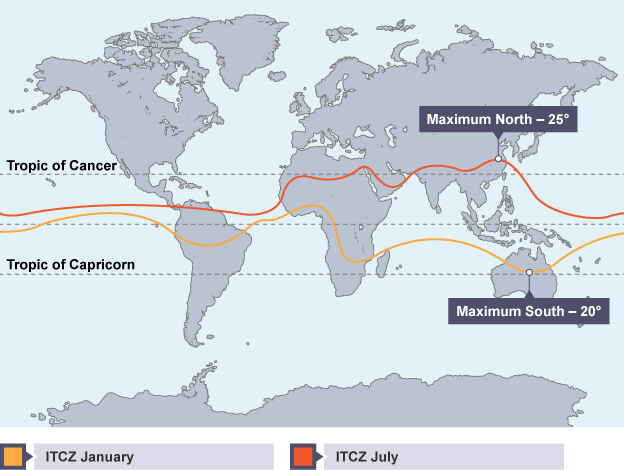
Tropical Continental Air Mass
- Tropical Maritime Air Mass (MT): This air mass originates from the Atlantic Ocean/Gulf of Guinea. In tropical regions, it is characterized by scorching to exceedingly hot temperatures, along with high relative humidity, culminating in highly unstable weather conditions.
- Tropical Continental Air Mass (CT): Originating from the Sahara Desert, this air mass in tropical zones also experiences intense heat, but it maintains low relative humidity, leading to more stable weather patterns.
The dynamic interplay between these two air masses becomes instrumental in the creation of the Intertropical Convergence Zone (ITCZ). When these air masses meet, the moist air ascends, leading to the accumulation of water vapor as it cools and rises. This process contributes to the formation of a prominent belt of intense precipitation that encircles the Earth. Importantly, the position of the ITCZ shifts southward when these air masses converge.
As the ITCZ moves north, it brings with it the influence of the MT winds over the land, resulting in wet weather conditions. Concurrently, areas situated to the north of the ITCZ experience scorching and arid weather patterns, influenced by the CT winds. Rainfall is a common occurrence beneath the ITCZ.
The variability in the ITCZ’s position significantly impacts precipitation patterns in many central regions, leading to distinct wet and dry seasons in tropical areas. This interplay of air masses and the ITCZ serves as a vital driver of climatic diversity and seasonal changes in these regions.
The ITCZ effectively affects atmospheres.
The atmosphere in three West African nations
Gao
Gao, with around 200 mm of precipitation each year, is a sweltering desert atmosphere, with just a constrained measure of precipitation in summer as the ITCZ moves north.
The hot, dry cT air impacts Gao’s atmosphere for the more significant part of the year. it accordingly has fewer long stretches of rain and little overall yearly precipitation.
This is because it is toward the north of the ITCZ for the more significant part of the year.
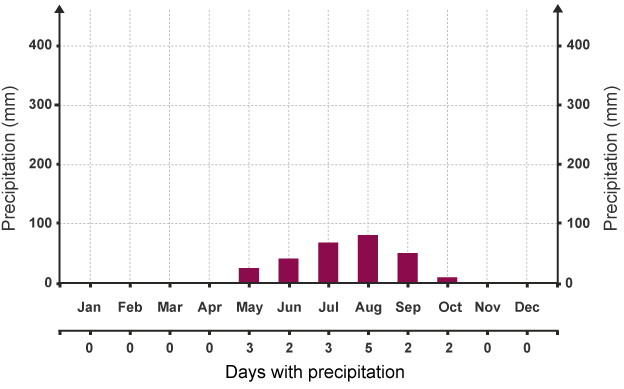
Abidjan

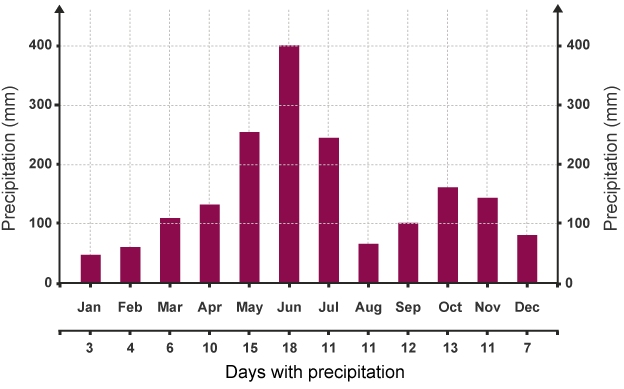
Abidjan, with around 1,700 mm of precipitation for each year, is a tropical rainforest atmosphere. As the chart above shows, it has a twin-precipitation peak system with a significant peak in June and a lower peak in October/November.
The measure of precipitation in Abidjan is higher than both Goa and Bobo-Dioulasso.
It is on the Gulf of Guinea coast and is along these lines affected by hot, sticky mT air for a large portion of the year. These result in higher yearly precipitation and a unique number of downpour days.
The twin precipitation peaks happen because the ITCZ moves north in the first part of the year, bringing precipitation and later south later in the year, again bringing precipitation.
Bobo-Dioulasso
Bobo-Dioulasso has total yearly precipitation of around 1,000 mm and has an unmistakable wet season/dry season system.
Atmosphere chart forBobo-Dioulasso.
As the chart below shows, it gets more downpour days and overwhelming summer precipitation from June until August when the ITCZ is farthest north. This carries precipitation to the region as the mT air mass is prevailing.
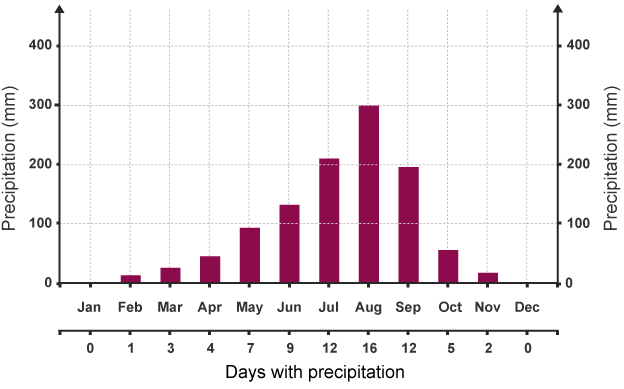
Qualities of an Intertropical Convergence Zone
The Earth’s climate is a product of various influences, encompassing the heat generated from within the Earth’s core and the radiant energy received from the Sun. Specific regions on our planet are distinguished by their unique climatic patterns, which are a direct consequence of these factors. One such region that frequently captures the attention of scientists, geologists, and meteorologists is the Intertropical Convergence Zone, or ITCZ. Situated as a belt near the Equator, the ITCZ represents the point of convergence where the northern and southern trade winds meet and interact.
Low Air Pressure
In the realm of meteorology, the convergence of the northern and southern trade winds within the Intertropical Convergence Zone (ITCZ) holds the key to comprehending the associated low air pressure phenomenon. Due to the Earth’s rotation, these winds encounter a barrier when attempting to traverse the Equator, a challenge that saps their energy. Instead of continuing their horizontal path across the Earth’s surface, these winds undergo a vertical ascent into the upper atmosphere. The Sun’s influence plays a pivotal role in this process by heating the Earth’s ocean currents, raising the temperature of the air and enabling its upward movement. Consequently, the Intertropical Convergence Zone exhibits low air pressure near the Earth’s surface. This pronounced lack of consistent horizontal wind flow in the region has earned the ITCZ the moniker “the doldrums,” a term frequently used by sailors to describe the absence of steady winds and a sense of stagnation within this atmospheric zone.
Precipitation/Humidity
The recurring upward movement of air within the Intertropical Convergence Zone (ITCZ) is instrumental in saturating the atmosphere with moisture. As this air ascends, it steadily cools to a point where moisture condenses into clouds. Consequently, the ITCZ is renowned for its intricate patterns of precipitation and elevated humidity levels. While certain regions within the zone may experience periodic dry spells, others remain consistently humid. Notably, the ITCZ is characterized by the occurrence of evening showers, further exemplifying the dynamic and moisture-laden nature of this atmospheric zone.
Storm Type
Precipitation within the Intertropical Convergence Zone (ITCZ) is notably distinct from gentle, prolonged rain. Instead, it is characterized by rapid and intense moisture buildup, primarily driven by the abundant energy derived from solar heating and warm temperatures, especially during the hottest part of the day. This heightened energy fosters swift cloud formation, often leading to the development of circular storms as air currents converge. It is within these circular storms, or cyclones, that some of the Earth’s most potent winds have been documented. Additionally, these storms frequently bring heavy downpours, contributing to the region’s reputation for intense and frequent rainfall events.
Intertropical Convergence Zone Location
The precise location of the Intertropical Convergence Zone (ITCZ) is contingent on the Earth’s seasonal dynamics. This ever-shifting zone encircles the Earth near the Equator, with its position fluctuating as our planet journeys through the seasons. As the Earth orbits the Sun, the area receiving the maximum solar heat and energy adjusts accordingly. Consequently, the warm Equator, which serves as the foundation for the ITCZ, undergoes seasonal migrations. These shifts can sometimes lead to the complete reversal of established trade wind patterns, particularly in regions such as the Indian Ocean, where the ITCZ’s movement exerts significant influence on atmospheric dynamics and weather systems.
Effect of the Intertropical Convergence Zone
The dynamic shifts in the Intertropical Convergence Zone (ITCZ) significantly influence global climatic conditions. Alterations in wind patterns within the ITCZ can precipitate the abrupt redistribution of warmth and moisture across various regions of the Earth. Moreover, these shifts have the capacity to impede or even disrupt ocean currents. These profound changes have far-reaching effects on both plant and animal life, exerting direct or indirect impacts on ecosystems. Ecosystems are highly reliant on climate patterns and temperature variations, making them susceptible to the transformative forces associated with the ITCZ’s movements.
Read more about Atmospheric Circulation
Summary
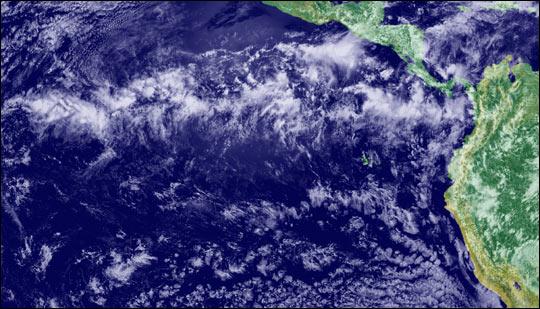
Definition
The Intertropical Convergence Zone, commonly referred to as the ITCZ, is a distinctive meteorological feature—a band of low-pressure clouds—that encircles the Earth, typically in close proximity to the Equator. It arises from the convergence of the trade winds originating from the Northern and Southern Hemispheres. This climatic phenomenon is distinguished by convective activity, which frequently gives rise to intense thunderstorms over extensive geographical regions. Notably, the ITCZ tends to exhibit higher levels of activity over continental landmasses during daylight hours, while its activity diminishes over the open seas.
Description
The position of the Intertropical Convergence Zone (ITCZ) is far from static, showcasing seasonal variability closely tied to the relative position of the Sun over the Earth’s surface, typically lagging behind by approximately 1 to 2 months. This positioning is most pronounced near the warm Equator. Owing to the fact that water possesses a greater heat capacity compared to land, the ITCZ exhibits a more distinct northward migration over landmasses than over oceanic expanses. Moreover, this migration is more pronounced in the Northern Hemisphere than in the Southern Hemisphere. During July and August, the ITCZ spans a range between 5 and 15 degrees north of the Equator over the Atlantic and Pacific Oceans, but extends further north over the continents of Africa and Asia. Notably, in eastern Asia, the ITCZ can reach as far as 30 degrees north of the Equator. In January, over the Atlantic, the ITCZ typically does not extend further south than the Equator. However, it substantially stretches southward over South America, Southern Africa, and Australia. Over land, the ITCZ tends to closely follow the Sun’s zenith.
The characteristics of the ITCZ vary depending on the strength of the trade winds. In regions where the trade winds are weaker, the ITCZ is marked by isolated Cumulus (Cu) and Cumulonimbus (Cb) clouds. In contrast, when the trade winds are stronger, the ITCZ can give rise to a continuous line of vigorous Cb cells interspersed with other cloud types formed due to instability at higher altitudes. These Cb cloud formations can reach, and occasionally surpass, altitudes of 55,000 feet, rendering the ITCZ an imposing barrier to air travel, especially when it extends over large areas, spanning up to 300 nautical miles in some locations.
Impact
When aircraft traverse an active Intertropical Convergence Zone (ITCZ) marked by stable trade winds, they are susceptible to various hazards typically associated with Cumulonimbus (Cb) clouds. These risks encompass factors such as icing, turbulence, lightning, and wind shear, all of which can pose challenges for flight safety. However, the most severe consequences often manifest within the ITCZ. Specifically, it is within this zone that convective penetrations of the tropopause frequently occur, with a significant number transpiring over land, particularly during the latter part of each day. In maritime regions, the phenomenon is less common and is more likely to transpire during the early morning hours, resulting in more isolated convective cells. Research supported by the National Aeronautics and Space Administration (NASA) has revealed that approximately 1% of tropical deep convective activities reach altitudes exceeding 46,000 feet, with a smaller fraction ascending to even greater heights. For further insights into the potential perils associated with flying through or approaching Cb clouds, refer to the comprehensive article on Cumulonimbus (Cb).
Frequently Asked Questions
What is the Intertropical Convergence Zone (ITCZ)?
The ITCZ is a belt of low pressure near the equator where trade winds from both hemispheres converge, leading to ascending moist air, cloud formation, and often heavy rainfall.
How does the ITCZ move throughout the year?
The ITCZ shifts north and south with the changing position of the Sun, reaching its northernmost and southernmost positions during the solstices.
What weather patterns are associated with the ITCZ?
The ITCZ is associated with the monsoon system and is responsible for the wet and dry seasons in tropical regions. It brings heavy rainfall and can cause flooding.
How does the ITCZ affect global weather and climate?
The ITCZ plays a crucial role in redistributing heat around the Earth, influencing global atmospheric circulation, weather patterns, and the locations of deserts and rainforests.
How does the ITCZ impact marine ecosystems?
The ITCZ affects ocean currents and upwelling, which influence nutrient availability and productivity in marine ecosystems, impacting the distribution of marine life.
References
- Characteristics of an Intertropical Convergence Zone. (n.d.). Retrieved from Sciencing: https://sciencing.com/air-movement-affect-weather-8657368.html
- Inter Tropical Convergence Zone (ITCZ). (n.d.). Retrieved from SkyBrary: https://www.skybrary.aero/index.php/Inter_Tropical_Convergence_Zone_(ITCZ)
- Intertropical convergence zone. (n.d.). Retrieved from Britainnica: https://www.britannica.com/science/intertropical-convergence-zone
- Inter-Tropical Convergence Zone (ITCZ): Causes and Impact. (n.d.). Retrieved from JagranJosh: https://www.jagranjosh.com/general-knowledge/inter-tropical-convergence-zone-itcz-causes-and-impact-1510048879-1
- Intertropical Convergent Zone. (n.d.). Retrieved from Science Direct: https://www.sciencedirect.com/topics/earth-and-planetary-sciences/intertropical-convergent-zone
- Structural characteristics of the Inter-Tropical Convergence Zone over the equatorial Indian Ocean during INDOEX-1999 field phase experiment. (n.d.). Retrieved from JSTOR: https://www.jstor.org/stable/24105125?seq=1
- The cause and impact of the Intertropical Convergence Zone. (n.d.). Retrieved from BBC: https://www.bbc.co.uk/bitesize/guides/z9yssbk/revision/1
- The Intertropical Convergence Zone. (n.d.). Retrieved from Earth Observatory: https://earthobservatory.nasa.gov/images/703/the-intertropical-convergence-zone
- The cause and impact of the Intertropical Convergence Zone. (n.d.). Retrieved from BBC: https://www.bbc.co.uk/bitesize/guides/z9yssbk/revision/2
- The cause and impact of the Intertropical Convergence Zone. (n.d.). Retrieved from BBC: https://www.bbc.co.uk/bitesize/guides/z9yssbk/revision/3
